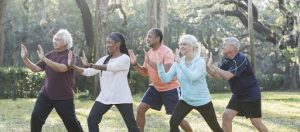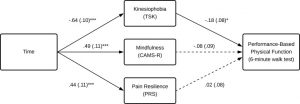Decrease Defensiveness and Increase Psychological Health with Meditation
By John M. de Castro, Ph.D.
“Meditation is the habitual process of training your mind to focus and redirect your thoughts. . . People also use the practice to develop other beneficial habits and feelings, such as a positive mood and outlook, self-discipline, healthy sleep patterns, and even increased pain tolerance.” – Matthew Thorpe
Over the last several decades, research and anecdotal experiences have accumulated an impressive evidential case that the development of mindfulness has positive benefits for the individual’s mental, physical, and spiritual life. Mindfulness appears to be beneficial both for healthy people and for people suffering from a myriad of illnesses. It appears to be beneficial across ages, from children to the elderly. And it appears to be beneficial across genders, personalities, race, and ethnicity. The breadth and depth of benefits is unprecedented.
Meditation practice has been shown to improve physical and psychological health and longevity. But people use defense mechanisms to cope with demanding emotional situations, including stress. It is not known if this defensiveness may interfere with the ability of meditation practice to improve the psychological health of the practitioners.
In today’s Research News article “Defensive Functioning Moderates the Effects of Nondirective Meditation.” (See summary below or view the full text of the study at: https://www.ncbi.nlm.nih.gov/pmc/articles/PMC7876444/ ) Hersoug and colleagues recruited adult working professionals and had them attend a 2-hour seminar on stress management. Afterward they were assigned to either a no-treatment control condition or to receive 5 2-hour sessions over 8 weeks of open monitoring meditation training. They were measured before and after training and 1 and 4 months later for defense mechanisms, neuroticism, general health, insomnia, and musculoskeletal pain.
They found that in comparison to baseline and the control group, the group that received open monitoring meditation training had significant improvements in sleep, muscle pain, neuroticism, and general health. These improvements were maintained during the follow-up period. They also found that the levels of defense mechanisms moderated these improvements such that the greater the level of defensiveness, the smaller the impact of meditation training on the physical and psychological health of the participants.
The findings suggest that open monitoring meditation training is beneficial for the psychological and physical health of working professionals. This replicates previous findings that mindfulness training improves sleep, personality, health, and pain. The current study adds that these effects are negatively impacted by the level of defense mechanisms of the participants. In other words, using defense mechanisms when confronted by stress rather than seeing it for what it is interferes with the ability of open monitoring meditation to improve psychological functioning and health. This makes sense as open monitoring meditation practice is designed to improve the individual’s ability to see things as they are. Using defense mechanisms interferes with seeing things as they are.
So, decrease defensiveness and increase psychological health with meditation.
“mindfulness meditation . . . practices focus on training attention and awareness in order to bring mental processes under greater voluntary control and thereby foster general mental well-being and development and/or specific capacities such as calmness, clarity and concentration.” – Daphne Davis
CMCS – Center for Mindfulness and Contemplative Studies
This and other Contemplative Studies posts are also available on Google+ https://plus.google.com/106784388191201299496/posts and on Twitter @MindfulResearch
Study Summary
Hersoug, A. G., Wærsted, M., & Lau, B. (2021). Defensive Functioning Moderates the Effects of Nondirective Meditation. Frontiers in psychology, 12, 629784. https://doi.org/10.3389/fpsyg.2021.629784
Abstract
We have recently found that nondirective meditation facilitates stress reduction. This supplementary study investigated whether defensive functioning would moderate these beneficial effects. We explored the occurrence of defense mechanisms and the impact of defensive functioning on the outcome of companies’ stress management programs regarding worries nervousness, mental distress, sleep problems, and muscle pain. The sample was a population of active, working professionals recruited from Norwegian companies (n = 105). The intervention group obtained significant benefits on all outcome measures, but there were no effects in the control group. We analyzed defensive functioning with the self-report questionnaire, Life Style Index, at four time points. The healthy adults who participated had a low level of defense scores at the outset. There was a significant reduction in the level of defenses in both groups over the study period, 6 months. Defensive functioning significantly moderated the change of the outcome measures from baseline to follow-up in the intervention group, but not in the control group.
https://www.ncbi.nlm.nih.gov/pmc/articles/PMC7876444/









